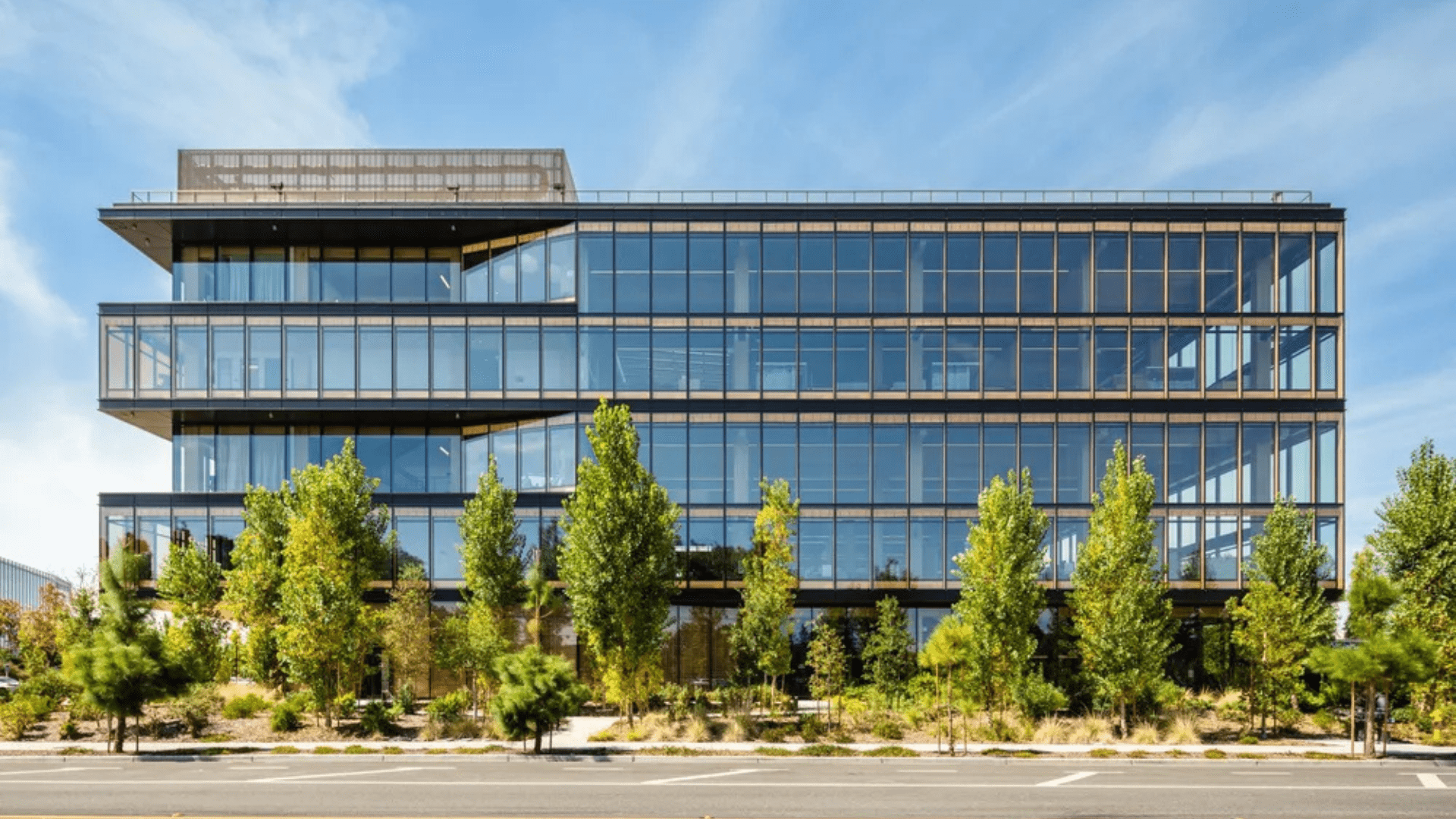Google recently announced a new office space, 1265 Borregas in Sunnyvale, California, made of mass timber, a newly engineered wood. While the newly constructed building is visually appealing, it also cuts carbon emissions. Mass timber is a sustainable material that absorbs and stores carbon over time.
What is Mass Timber?

Mass timber is large, pre-manufactured, multilayered solid wood panels. According to the American Wood Council, buildings constructed with mass timber typically use the material for solid timber walls and floors. Typical mass timber products include cross-laminated timber (CLT), nail-laminated timber, glued-laminated timber (glulam), and structural composite lumber. Each wood product is renewable and sustainably-engineered.
The AWC says using these renewable wood products makes for efficient construction and renovation. When the materials reach their end-of-life period, they’re disassembled and repurposed.
Google’s Goal

Because the mass timber stores carbon, a process called sequestration, it’s a sustainable and environmentally friendly building option. Reducing carbon emissions was one of Google’s goals when constructing the new office building. In addition, it helps decrease carbon emissions that come from traditional extraction, production, and transportation. Google said, “Because of this, 1265 Borregas is projected to have 96% fewer embodied carbon emissions than an equivalent steel and concrete structure when you factor in sequestration over time.”
According to Google’s press release, “Achieving these climate benefits requires careful attention to the material’s lifecycle, which is why 100% of the structural mass timber lumber we used for 1265 Borregas was procured from responsibly managed forests certified by the Forest Stewardship Council (FSC).”
In addition to the mass wood, the newly constructed 1265 Borregas is also an all-electric, LEED Platinum building with solar panels that generate electricity for the entire building. All of the sustainable features contribute to Google’s goal to achieve net-zero carbon emissions and operate on carbon-free energy 24/7 by 2030.
Community Focused

The company also considered the community when choosing the building process. Mass timber’s pre-fit building parts accelerate structural assembly, which means there is less construction traffic and noise, like jackhammers. Additionally, construction waste at the site has been reduced.
Aside from the building itself, Google considered the grounds. The team planted three acres of pollinator-friendly native plants, including coast live oak, California sagebrush, California wild rose, and common milkweed. On the northeast corner of the building, you’ll find public artwork.
“This building shows what’s possible when you combine sustainability and construction efficiency into an office building, while also prioritizing employee wellbeing,” the company said. “We hope that others in the industry will join us in this approach in support of a more sustainable future.”







